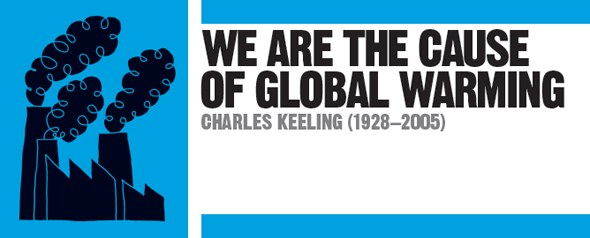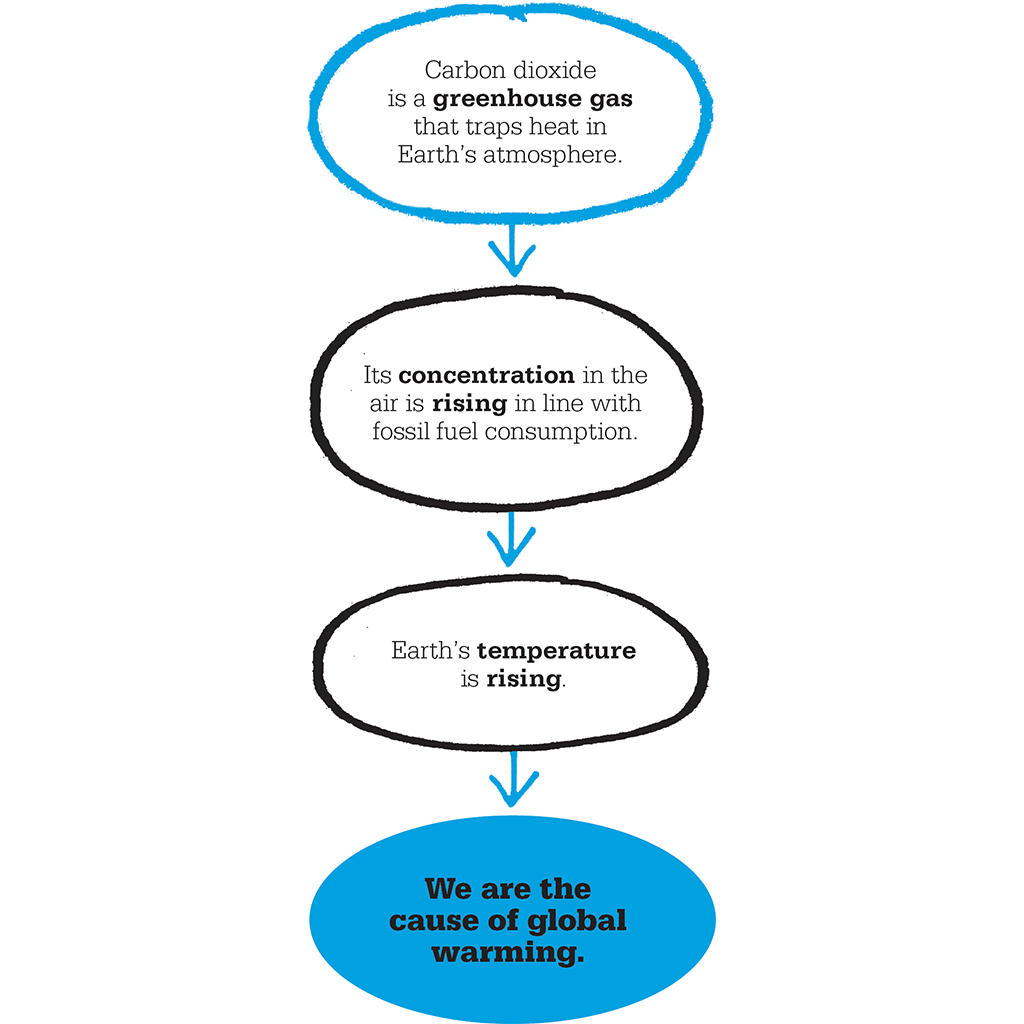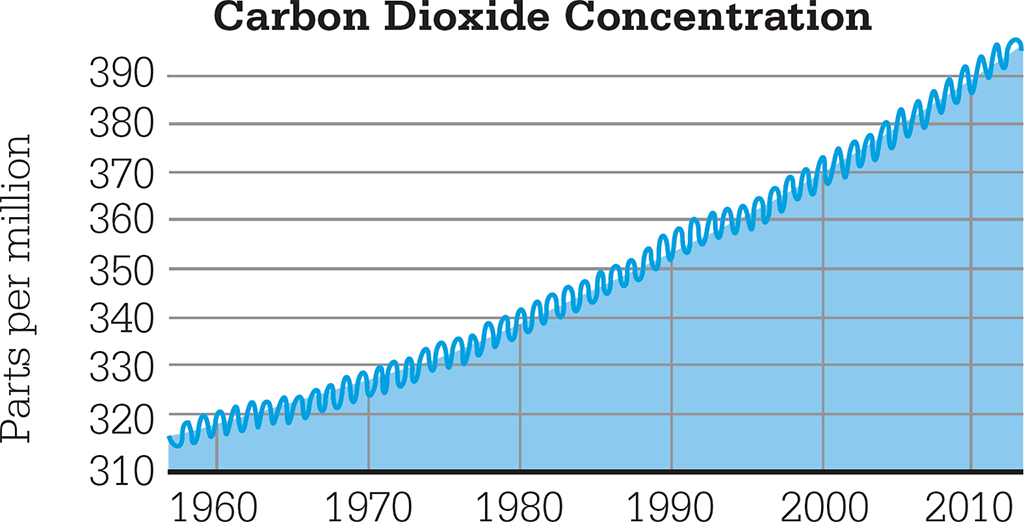
IN CONTEXT
Meteorology
1824 Joseph Fourier suggests that Earth’s atmosphere makes the planet warmer.
1859 Irish physicist John Tyndall proves that carbon dioxide (CO2), water vapour, and ozone trap heat in Earth’s atmosphere.
1903 Swedish chemist Svante Arrhenius suggests that the CO2 released by burning fossil fuel might be causing atmospheric warming.
1938 British engineer Guy Callendar reports that Earth’s average temperature increased by 0.5°C (1°F) between 1890 and 1935.
1988 The Intergovernmental Panel on Climate Change (IPCC) is set up to assess scientific research and guide global policy.
The realization that carbon dioxide (CO2) levels in the atmosphere are not only rising but might also cause disastrous warming first came to widespread scientific and public attention in the 1950s. Past scientists had assumed that the concentration of CO2 in the atmosphere varied from time to time, but was always around 0.03 per cent, or 300 parts per million (ppm). In 1958, American geochemist Charles Keeling began to measure the concentration of CO2 using a sensitive instrument he had developed. It was his findings that alerted the world to the relentless rise of CO2 and, by the late 1970s, to the human role in accelerating the so-called “greenhouse effect”.

Regular measurements
Keeling measured CO2 in several places: Big Sur in California, the Olympic peninsula in Washington State, and the high mountain forests of Arizona. He also recorded measurements at the South Pole and from aircraft. In 1957, Keeling founded a meteorological station at 3,000m (10,000ft) above sea level on the top of Mauna Loa in Hawaii. Keeling measured the carbon dioxide level at the station regularly, and discovered three things.
First, there was a daily variation locally. The concentration was at a minimum mid-afternoon, when green plants were at their most active in soaking up CO2. Second, there was annual variation globally. The northern hemisphere had more land for plants to grow, and the level of CO2 rose slowly during the northern winter when plants were not growing. It reached a peak in May before plants started to grow and began soaking up CO2 again. The level dropped to a minimum in October, when northern plants died back for winter. Third, crucially, the concentration was increasing inexorably. Cores of polar ice contained bubbles of air, which showed that during most of the time since 9000 BCE, the CO2 concentration varied from 275 to 285 ppm by volume. In 1958, Keeling measured 315 ppm; by May 2013, the average concentration exceeded 400 ppm for the first time. The increase from 1958 to 2013 was 85 ppm, meaning that the concentration had increased by 27 per cent in 55 years. This was the first concrete evidence that the concentration of CO2 in Earth’s atmosphere is increasing. CO2is a greenhouse gas, helping to trap heat from the Sun, so increasing CO2 concentration is likely to lead to global warming. Keeling found the following: “At the South Pole the concentration has increased at the rate of about 1.3 ppm per year…the observed rate of increase is nearly that to be expected from the combustion of fossil fuel (1.4 ppm).” In other words, humans are at least part of the cause.

Keeling’s graph plots the rising levels of CO2 in the atmosphere year on year. The small annual fluctuation (shown by the blue line) is due to seasonal changes in CO2 uptake by plants.
"The demand for energy is certain to increase…as an ever larger population strives to improve its standard of living."
Charles Keeling
CHARLES KEELING

Born in Scranton, Pennsylvania, Charles Keeling was an accomplished pianist as well as a scientist. In 1954, as a post-doctoral fellow in geochemistry at the California Institute of Technology (Caltech), he developed a new instrument to measure carbon dioxide in atmospheric samples. He found that the concentration varied hour by hour at Caltech, probably because of all the traffic, so he went camping in the wilderness at Big Sur and found small but significant variations there, too. This inspired him to begin what was to be a lifetime’s work. In 1956, he joined the Scripps Institution of Oceanography in La Jolla, California, where he worked for 43 years.
In 2002, Keeling received the National Medal of Science, America’s highest award for lifetime achievement in science. Since his death, his son Ralph has taken over his work monitoring the atmosphere.
Key work
1997 Climate Change and Carbon Dioxide: An Introduction
See also: Jan Ingenhousz • Joseph Fourier • Robert FitzRoy